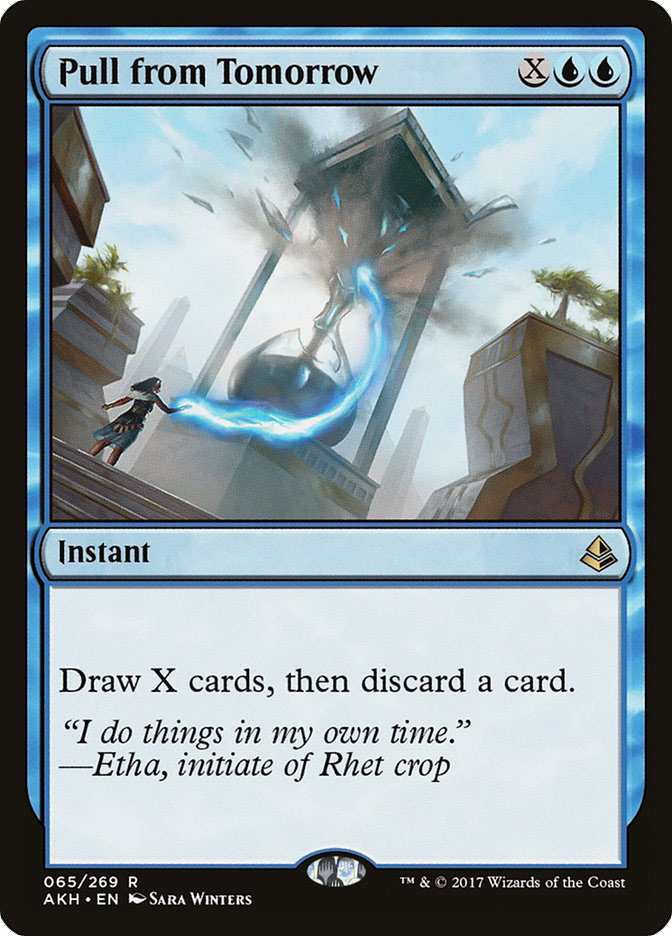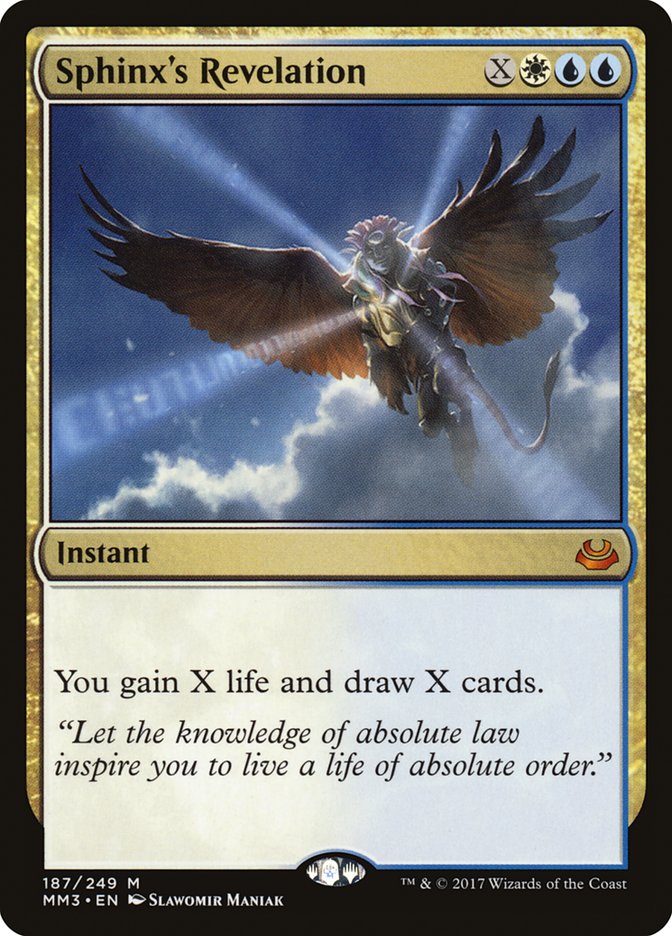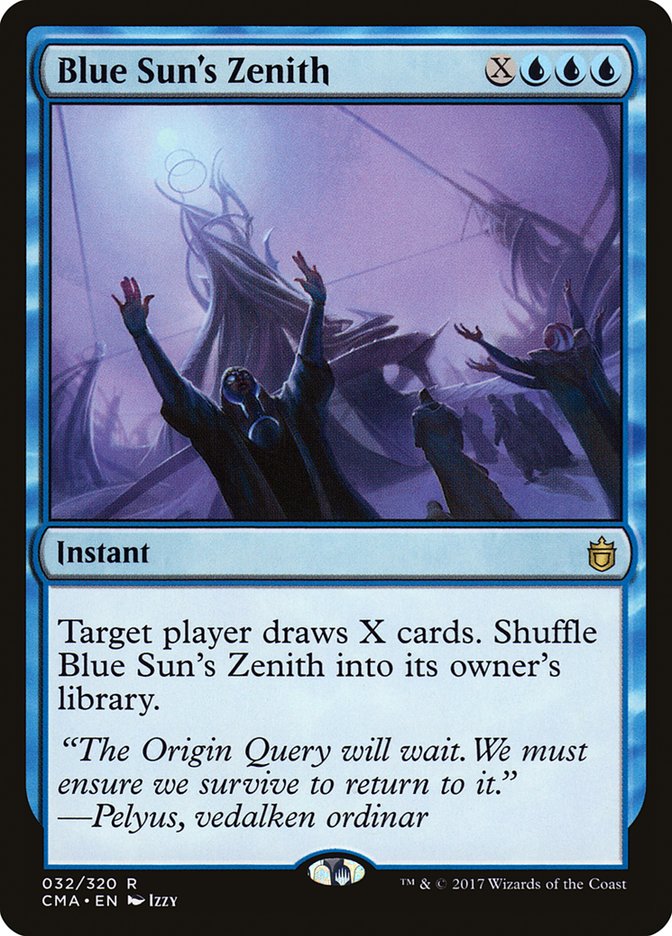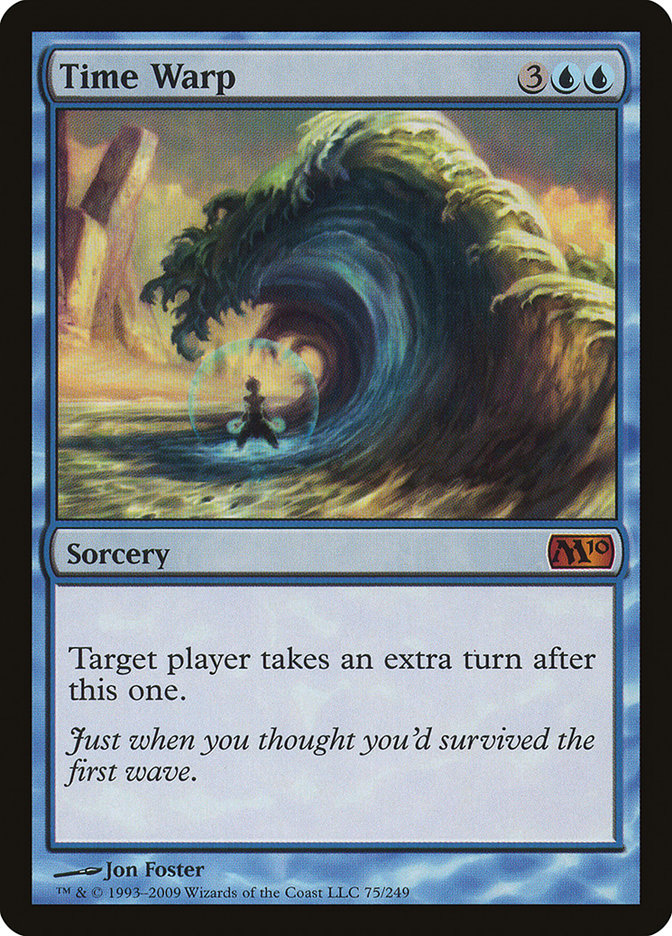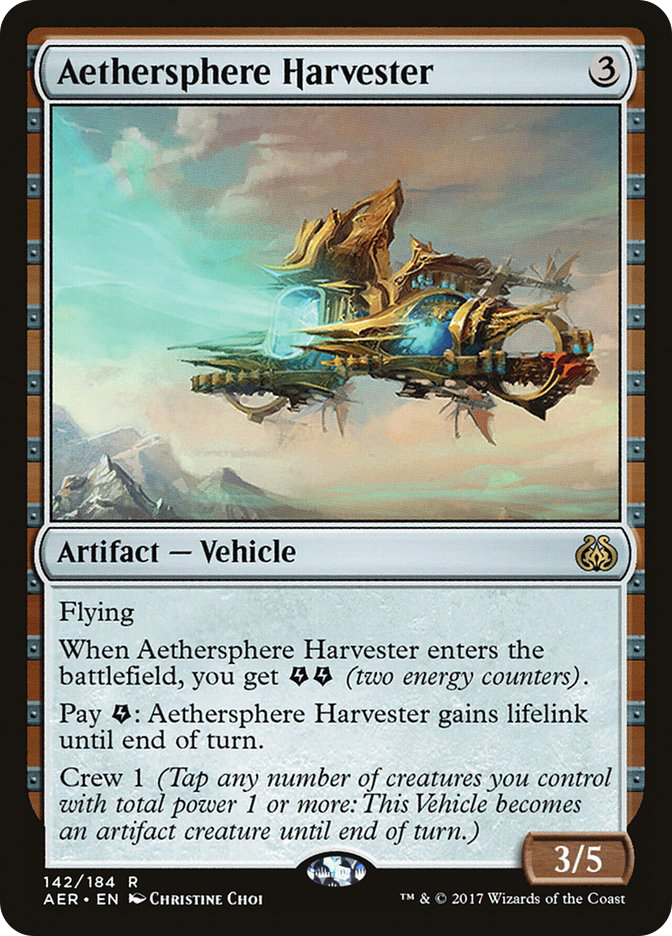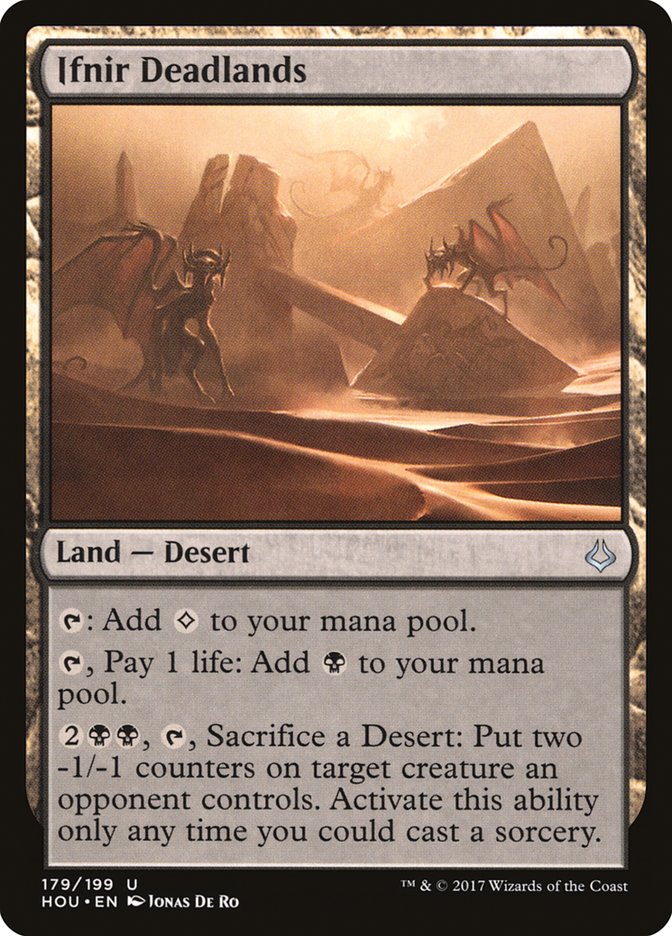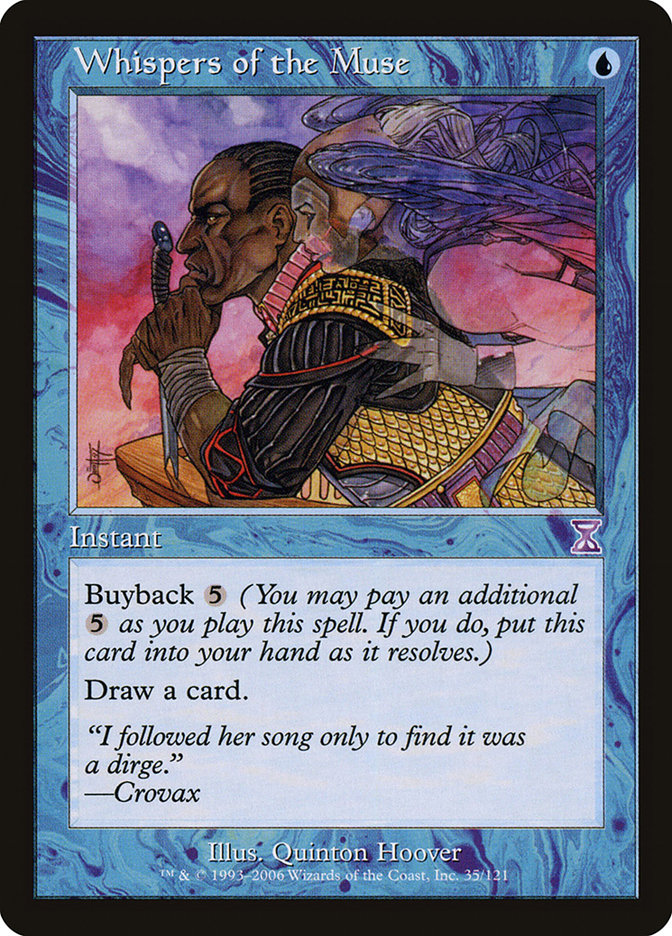Some of the best articles end up on the cutting room floor. I suppose I don’t quite have the audacity to assume this of all my fellow Magic writers, but I can say that some of my best ideas for articles are things that have sat in my iPhone’s notepad for over a year now.
Part of this is because ideas can be hard to verbalize, and putting them to paper can be even harder. Another handful of them are in a horrible half-baked area of “Not enough of an idea for its own article, but too much to have a single paragraph in a similar article.”
Roughly a year ago I published an article of a few pieces that all fell into the latter camp: short, but deserving of attention. Without further ado, here are a couple more mini-articles with some TV references sprinkled in for flavor.
Card Advantage Ain’t What It Used To Be
It’s exactly what the title says. Over the years, card advantage has become less and less relevant in games of “normal” Magic.
People have been writing about tempo for what feels like forever at this point, yet games of Magic keep ending with the losing player having cards left in their hand at the conclusion. A lot of the reason for this has to do with the power creep of “fair” threats over the last few years. Let me explain.
All of these cards are absolutely fantastic and can end a game very quickly. Other than the recursive element on Prized Amalgam and Reality Smasher’s pseudo-protection, these cards don’t have some absurd over-the-top card advantage engine that stacks up to cards from the formats of yesteryear.
Today, it is generally more valuable for a deck to have threats that are efficient and difficult to deal with, rather than cards that can create a large advantage equated in raw cards. Sure, Hazoret the Fervent isn’t going to be generating a lot of cards for her controller, but if the opponent is dead, who cares how many cards one has?
Let’s look at the key differences between these two cards, the additional mana and lifegain on Sphinx’s Revelation versus the lowered cost and discard on the Pull from Tomorrow. Is it really that different?
Absolutely!
When Sphinx’s Revelation was first revealed, it didn’t get a large amount of hype around it. The biggest reason is that, during preview seasons, people tend to draw parallels between new cards being previewed and recent iterations of similar cards. When Return to Ravnica was printed, Scars of Mirrodin block was rotating, and with it, Blue Sun’s Zenith was rotating.
This card is the same mana cost-to-card advantage ratio as Sphinx’s Revelation, but Sphinx’s Revelation just had “Gain X life” tacked on.
How good could X life really be? One of the first lessons that we teach to newer Magic players is that lifegain spells are bad. Like, “Healing Salve isn’t a playable Magic card” bad. As in, “put a lot of effort into convincing your friend that Fountain of Youth and Tanglebloom are seriously not worth the cardboard they’re printed on.”
The key difference here is that Sphinx’s Revelation wasn’t just a lifegain spell. It also wasn’t just a card advantage spell. The issue with cards like Pull from Tomorrow and Blue Sun’s Zenith is that they effectively ask their casters to take an entire turn off to do nothing more than generate a large sum of cards. Couple that with the fact that Pull from Tomorrow and Blue Sun’s Zenith don’t do anything in the earlier phases of the game, and you end up with a pair of cards that really need a few things to be going right for them to be justifiable. Sphinx’s Revelation played a different ballgame.
Life is a resource, specifically one that is generally used as a shorthand way to equate to time or turns of the game remaining. Sure, it’s cute to say “As long as you’re at one life, none of the other damage matters!”, but that isn’t completely true. Life dictates the pace at which one can play one’s game and how conservative one needs to be with one’s resources, relative to protecting one’s life total versus reducing the opponent’s.
What Sphinx’s Revelation did is give its caster time to utilize the cards that it was giving its caster. Rather than being exclusively a card drawing engine, it was also a card that would give its caster a pile of cards and make it as if the person drawing said cards wasn’t having to sink an entire turn into resolving this spell.
The fact that Sphinx’s Revelation defined a Standard format, while Pull from Tomorrow struggles to put up results, should speak volumes about the weight of the very real cost associated with sinking so much time into a spell that doesn’t do anything to impact the battlefield. There’s a reason that people are loading up on Torrential Gearhulk in their blue decks instead.
Slanting
People tend to want to beat specific things when they choose to play a certain deck. Right now, most formats in Magic are relatively open, and it feels much closer to choosing rock, paper, or scissors (or Spock, or dynamite, or Batman, or…) rather than choosing what the “best” deck in a format is. Sure, Ramunap Red, Death’s Shadow, and Grixis Delver may be the most represented decks in their respective formats, but the margin that defines them as the “best” deck in their given context is so slim that it is more a decision on how one wants to play the game and what one wants to beat as a result.
Almost any deck can beat anything else; it’s just a matter of slanting one’s deck towards doing it without diluting one’s deck to only be good at beating a single archetype. This is something that I did last weekend when I made it to the Top 4 of the Standard Classic in #SCGNY playing Mono-Black Zombies:
Creatures (22)
- 2 Kalitas, Traitor of Ghet
- 4 Relentless Dead
- 4 Diregraf Colossus
- 4 Cryptbreaker
- 4 Lord of the Accursed
- 4 Dread Wanderer
Planeswalkers (1)
Lands (24)
Spells (13)

Notice anything about the decklist? It’s slanted to beat Ramunap Red, with a couple of curve concessions and card changes to reflect this decision.
Kalitas has been a popular addition in Zombies lately as it locks up the ground against everything out of Ramunap Red sans Hazoret the Fervent, works to exile Earthshaker Khenra, and gives a haymaker with a lower converted mana cost than Liliana’s Mastery in the maindeck. The applications of the card against Delirium and Zombie mirrors don’t hurt either.
The Aethersphere Harvesters out of the sideboard show a clear respect for specifically the red deck. The card may be serviceable in other matchups, but it’s a relatively overt signal that my goal when putting the list together was to be just about as anti-red as possible in post-sideboard games as one could get. Sure, Abrade can kill it, but you know what else cleanly answers it?
That was a genuine question. I don’t believe anything else out of the deck is going to completely thrash an Aethersphere Harvester.
The 1/1 maindeck/sideboard split for Liliana was another selection that signaled a respect for the deck that relies on twelve to twenty X/1 creatures to reduce the opponent to zero life. Liliana doesn’t frequent many Zombie main decks because she isn’t proactive and doesn’t improve upon the tribal synergies that the deck lives or dies by. In this particular context, the plan was for Liliana to serve as a repeatable source of removal against a deck that was predicted to occupy a large portion of the field.
Upon the reveal of the Desert-painland cycle of lands in Hour of Devastation, I was initially ecstatic. Mono- and two-color decks effectively get to play extra spells with little to no drawback, and give us another reason not to cheat on our lands! Then the Pro Tour happened, and we were faced with a deck that could punish players for playing too many lands that cost life to function. The decision to play three copies of Ifnir Deadlands was a conscious one, and it’s likely that the proper number may actually be two.
I lost a game in the Swiss rounds due to having a Relentless Dead and an Ifnir Deadlands in the same draw. Some mistakes are less forgiving than others.
Other than “I would like to have game against Ramunap Red,” is there anything particularly noticeable about the decisions in deckbuilding? They’re boring.
I’m not going out of my way to play cards that specifically gain chunks of life, or clunky defenders that aren’t able to apply pressure.
Rather than actually building an anti-red deck, I’m playing a deck with a proactive plan, and making choices during the deckbuilding process that slant it towards beating red. A majority of the best deckbuilding decisions go completely unnoticed because they seem intuitive in hindsight, but as the decision is being made, there is a conscious thought driving that decision, and a risk being taken to stray from whatever the previously accepted norm is.
Use this to take your deckbuilding, and tournament results, to the next level in relatively short fashion.
Modern Control Isn’t Dead!
It’s a commonly accepted notion that Wizards of the Coast hates control and that the archetype is dying, dead, departed, whatever. This just isn’t remotely true.
Today, Control decks are required to actually work on killing their opponents and not just sitting on their hands, hoping to win with one of two copies of Stalking Stones or a Kjeldoran Outpost. With the increased power of finishers for aggressive and midrange strategies also came the increased power of control finishers.
The increased power of control finishers has led the archetype as a whole to end up evolving into something that is closer to midrange deck, that plays a controlling role (a la Who’s the Beatdown?) in a wider variety of matchups. Consider this shell:
Creatures (11)
Lands (24)
Spells (25)

Rosum’s list is absolutely able to play the role of a deck that wins through attrition; answering the opponent’s spells and out-carding them with Snapcaster Mage and Cryptic Command is relatively academic at this point. On the other hand, it also has the ability to resolve a Geist of Saint Traft and then pummel the opponent by doing nothing more than preventing them from interacting with said Spirit Cleric.
By old control standards, this isn’t a control deck! It taps out on the opponent’s turn, plays a higher density of threats, and isn’t planning to take over the game with a single card that provides an insurmountable advantage (think Whispers of the Muse).
This is more a demonstration of what Control has had to do in order to thrive under the conditions created by Wizards of the Coast in the last few years.
In the last decade or so, Wizards of the Coast has been working more and more to create cards that ensure games of Magic actually end. What’s the best way to do that? Create better threats. As a result, cards that are playable in Constructed get closer and closer to “the middle” of being good for control decks and for aggressive strategies. In a lot of ways, the printing of Tarmogoyf was the beginning of the end for “classic” control decks.
When Tarmogoyf was originally printed, it took a bit of time to catch on, but eventually crept its way into every format of Magic, and originally was even the punchline of one of the more popular sad-but-true jokes in Magic:
Q: “What’s the best blue creature ever printed?”
A: Tarmogoyf!
Applause, curtain, fin.
Tarmogoyf started to push control in a direction that gave it a more proactive “Protect the Queen” strategy, allowing it to finish games in a more reasonable amount of time, and giving it a way to have “free” wins that it previously lacked.
This set a deck design precedent that inspired deckbuilders to begin putting more midrange threats into their control decks, and the rest is relatively history.
People regularly complain that classic control is dead, but it is much more than that. Magic is constantly evolving, and just like the rest of Magic strategy has shifted within the last fifteen to twenty years, control has adapted to its surroundings and also changed into something that isn’t quite the same as we remember.
Future Expansions
All of these are topics that I feel strongly enough on to put my name on them on a public forum, and if there’s something here that you’d like expanded upon, say so. Feedback is getting harder and harder to come across these days, and it becomes infinitely easier to find out what I, as a writer, should put to paper if readers like you make themselves heard and explicitly say what it is that they’d like to hear more of.
This weekend is #SCGRICH and I’ll be sleeving up my trusty Death’s Shadows for the event. Modern is a game of expertise, and everyone knows I’ve beaten the Death’s Shadow horse to death. Make sure to say hello if you find yourself in attendance!



